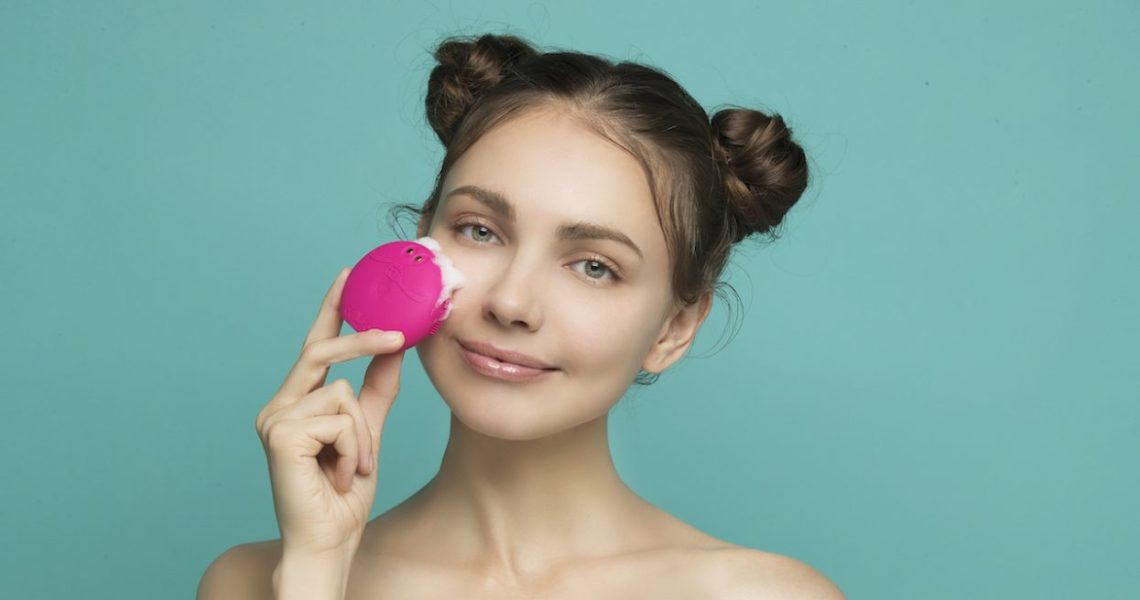While handbags are the most counterfeited item globally, counterfeit beauty products are increasing at a rapid rate, and counterfeiters are getting smarter about making fakes look like the real thing.
Pricey beauty devices and Instagram-popular brands are particularly vulnerable within the beauty world. For example, in January, a truck overturned on a highway in China’s Zhejiang Province, scattering more than 5,000 counterfeit Foreo Luna mini 2 facial cleansing devices. In 2018 alone, Foreo conducted 30 administrative raids and 15 criminal raids; the company seized more than 30,000 counterfeit Luna devices as a result. At any one time, the company has five cases under investigation, a brand spokesperson said.
According to the Organization for Economic Co-operation and Development, cosmetics rank in the top-five fake items worldwide. Interestingly, IP infringement protection agency Red Points recently saw a 40% increase in detections of fake beauty items on Instagram in the weeks leading up to Mother’s Day — 30% of all intellectual property infringements for beauty brands were found on Facebook or Instagram.
Glossy spoke with three popular brands among counterfeiters, facial device companies Clarisonic and Foreo and foot exfoliator brand Baby Foot, about who the biggest counterfeit culprits are, what they are doing to stop the influx of fakes and the risks fakes pose to their brands.
Where are counterfeit products coming from, and how are they getting to customers?
Evan Feldstein, vice general manager and general counsel for Foreo North America: Usually from China. What happens is that a fake product gets put together in a warehouse in China and shipped to a big city that then makes its way through the [usual sales] channels in the way a normal product would. Some distributors want a product so badly, so they will use a fake one. In the U.S., it’s a little more complex. Sometimes a person receives fake products here and then ships them back to China to their relatives.
Kathy Chi-Thurber, general manager of Clarisonic: The marketplace of major retailers such as Amazon, Target and Walmart. These third-party vendors are leveraging our brand name and the equity of our designs, patents, images and claims to deceive consumers into believing they are our products or as good as our products.
Ad position: web_incontent_pos1
What steps have you taken to prevent counterfeits?
Scott Gibbons, U.S. distributor for Baby Foot: At first, we were afraid to bring attention to it, because we thought it might increase the problem by giving people ideas or [that people] would feel negative toward the brand. But then it became a larger percentage of sales that we weren’t getting, so we realized we had to do something. It was probably, at its worst, maybe 25% of sales that were counterfeit. We started with take-down requests for Amazon, but we also had a campaign on our website [in the fourth quarter of 2018] about not buying fakes. We shared information about how to tell a fake from a genuine product, and we did that for several months. But then we had to take it down because all the things we pointed out were [amended] by the counterfeits. That was embarrassing because we had been afraid of something like this.
Feldstein: We have a take-down platform, Red Points, that helps us find online listings of products [on places], like Alibaba or eBay. In the last year, I oversaw a lawsuit in Florida where we sued 50 patent infringers; these devices are shaped like our design or maybe make it a little different. We are also proactive in making sure different designs and versions of a product are covered so that anything [counterfeiters] make fall under the purview of our utility patents. What we do now is work with our engineers to see how else they might [adjust] the components of the product in order to make additional utility patents. We also have a serial-number program [that shows] where it was bought, when and where it was shipped to. We also have authentication mechanisms [via a serial number] that allow us to authenticate only legitimate devices through Foreo.com.
Besides sales, what is the impact counterfeits have on your brand?
Chi-Thurber: For us, it’s less about our brand and more about our consumers. Our brush heads and devices go through rigorous screening and quality checks to ensure they are safe and delivering the efficacy promised to bring results. We have read numerous instances where consumers purchased counterfeits and had terrible quality issues that resulted in device breakage, harshness and damage to their skin. This frightens us. Clarisonic has patented end-rounding processes on brush heads to ensure we never damage the most sensitive skin. Counterfeiters don’t [copy] these processes and [they] put consumers at risk and disappointment for what should have been a worthwhile investment.
Ad position: web_incontent_pos2
Gibbons: You start getting [negative] reviews on products that aren’t really yours. And then people come back to retailers and complain to them, or go to a place like eBay and Amazon and complain. It affects the value and impression of the brand. It also drives the prices down because when a legitimate buyer [sees] someone else selling for less, they ask us why. And we tell them it’s not real, but can we prove that on the spot? No.




